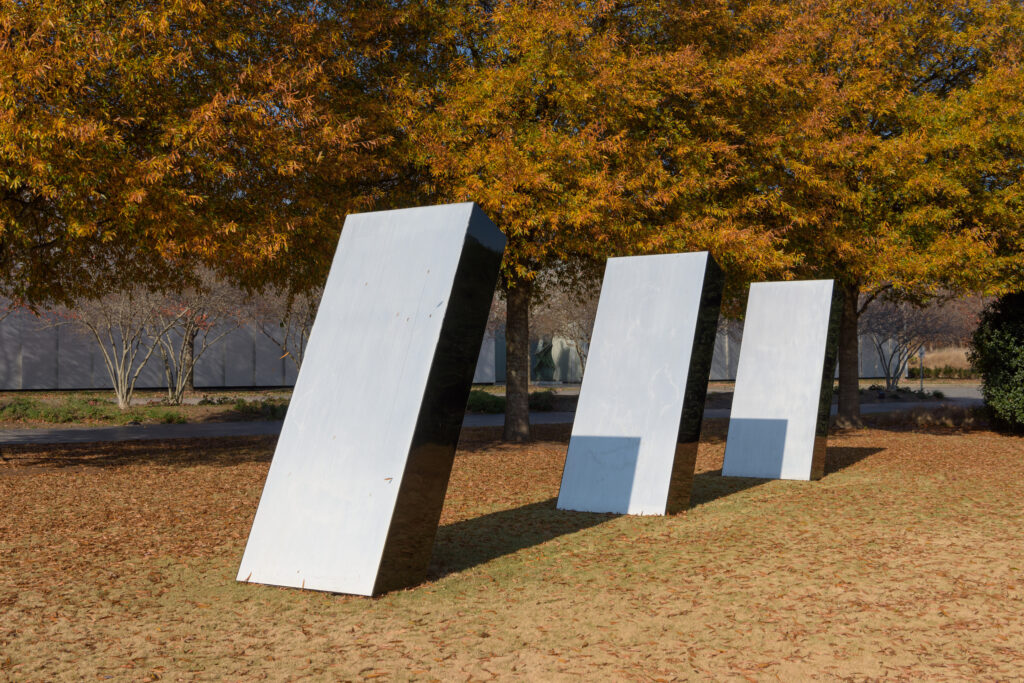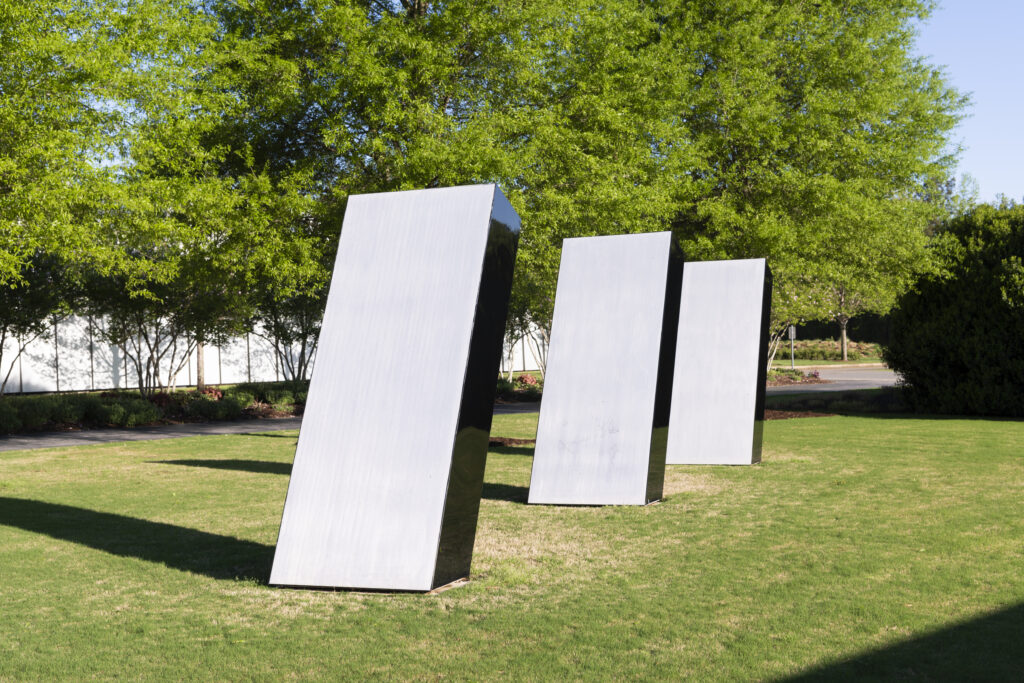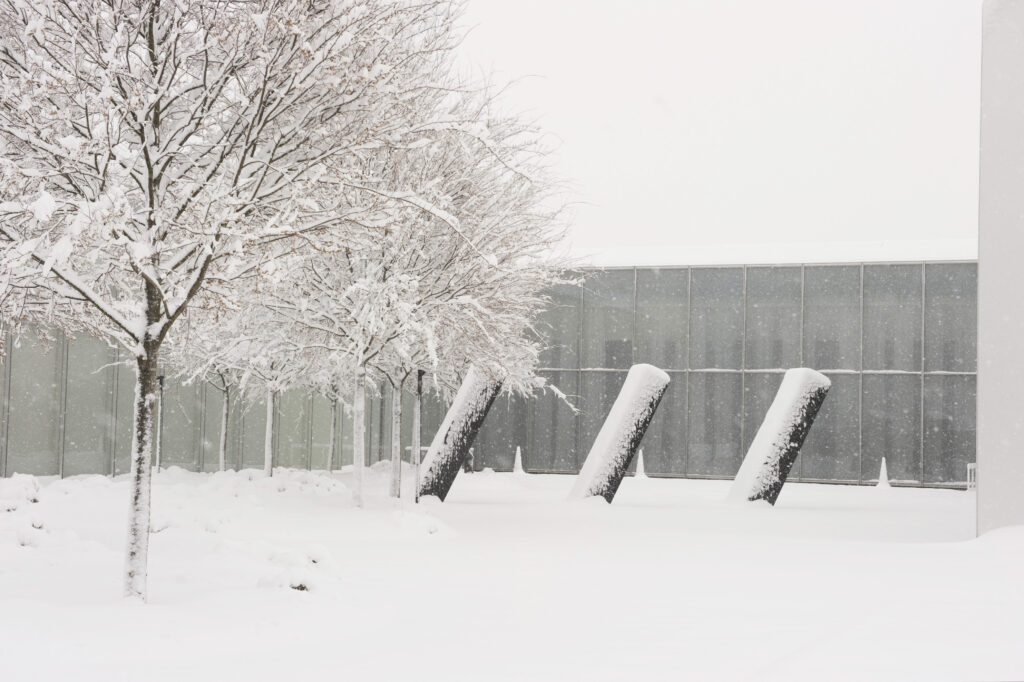Three Elements (work of art)
Artwork Info
Key Ideas
- This is a modern, minimalist sculpture of three tilting, slablike geometric shapes.
- Each element of this sculpture is made of painted aluminum over welded steel. The sculpture was originally made out of wood. It was later made from steel so it could be installed outdoors.
- Ronald Bladen was an American sculptor and painter. He is best known for his large abstract sculptures. He is considered to be one of the “fathers of minimalism.”
- Bladen’s minimalist style features geometric grids and straight lines. These simplified forms make his massive sculptures appear to be weightless.
- In 1966 Bladen’s sculpture was included in the first public exhibition of minimalist art at the Jewish Museum in New York.
Learn More
These three modern structures are made out of painted and burnished aluminum over welded steel. They were originally made from wood. They were later fabricated in steel so they could be installed outdoors. The structures are both minimalist and abstract. Minimalist art is a type of abstract art that often features hard edges, repeating geometric shapes, blocks of color, precise lines, and limited color choices.
Ronald Bladen was an American sculptor and painter. He is considered to be one of the “fathers of minimalism.” He is best known for his large abstract sculptures. He also created many paintings that were associated with the abstract expressionist movement. Expressionist art often depicts flat and distorted forms that express the artist’s personal view. This art movement introduced abstraction. Abstract art does not attempt to represent objects and forms realistically.
Bladen was influenced by European constructivism and American hard edge painting. His minimalist style features geometric grids and clean, straight lines. These simplified forms give his large sculptures a sense of lightness and weightlessness. He created Three Elements in the mid 1960s, when the minimalist aesthetic was becoming popular. Bladen’s sculpture was part of the 1966 exhibition, Primary Structures, at the Jewish Museum in New York. The exhibition was especially important for minimalist art. It was the first to introduce this new art movement to a public audience.
Additional Resources
Resources for Teachers
- Read a review of a retrospective exhibition of Bladen’s work.
- Read an article about the minimalism movement.
- Watch a video about the artist’s sculptures.
Resources for Students
- Visit the artist’s website to see more examples of his work.
- Watch a video about a sculpture Bladen designed for a city.
- Watch a video about the minimalist movement.




